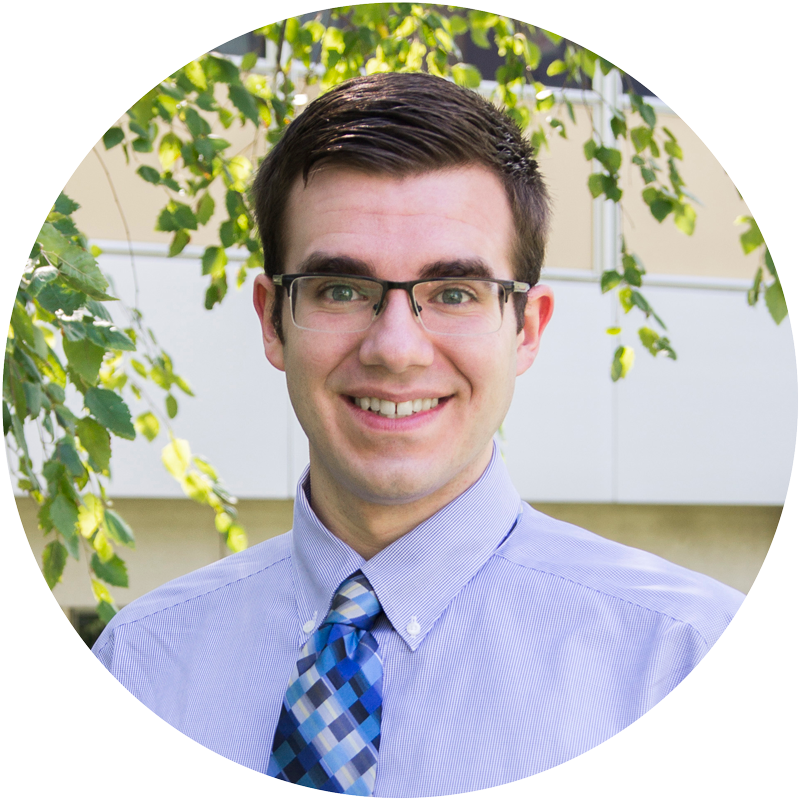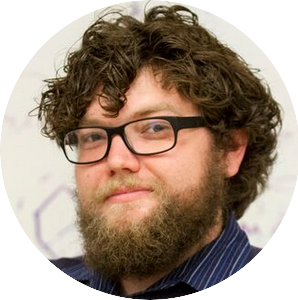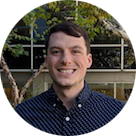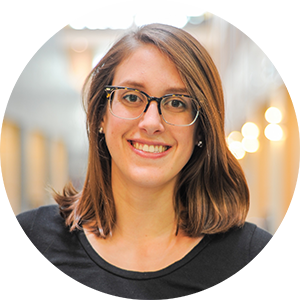About
The signac project was launched in 2015 by the Glotzer Group at the University of Michigan. More background on the design philosophy and implementational concepts are published in volume 146 of the Journal of Computational Materials Science and in the Proceedings of the 17th Python in Science Conference.
- C. S. Adorf, P. M. Dodd, V. Ramasubramani, and S. C. Glotzer. “Simple data and workflow management with the signac framework”, Comput. Mater. Sci. 146(C):220-229, 2018. DOI:10.1016/j.commatsci.2018.01.035.
- V. Ramasubramani, C. S. Adorf, P. M. Dodd, B. D. Dice, S. C. Glotzer (2018). “signac: A Python framework for data and workflow management”, Proceedings of the 17th Python in Science Conference (Scipy), p. 152-159, DOI:10.25080/Majora-4af1f417-016.
A preprint is also available on the arXiv.
Maintainers
 Carl S. Adorf is the lead developer and maintainer of the core signac and the signac-flow package.
His research interests include the optimization of particle interaction models for the self-assembly of materials with complex structures and best practices in scientific computing.
Carl S. Adorf is the lead developer and maintainer of the core signac and the signac-flow package.
His research interests include the optimization of particle interaction models for the self-assembly of materials with complex structures and best practices in scientific computing.
 Vyas Ramasubramani joined the project in 2016 and has since provided valuable contributions to the signac-flow package and overall development of the framework.
His research interests include depletion induced self-assembly of structural matter.
Vyas Ramasubramani joined the project in 2016 and has since provided valuable contributions to the signac-flow package and overall development of the framework.
His research interests include depletion induced self-assembly of structural matter.
 Bradley Dice joined the signac development team in 2017 and authored the signac-dashboard package, which enables users to visualize and search data managed with signac within a web browser.
Bradley is studying the self-assembly pathways of complex colloidal structures.
Bradley Dice joined the signac development team in 2017 and authored the signac-dashboard package, which enables users to visualize and search data managed with signac within a web browser.
Bradley is studying the self-assembly pathways of complex colloidal structures.
 Mike Henry joined the signac development team in 2019 and is a graduate student in the CME lab.
His research interests include developing coarse-graining methods to better understand molecular self-assembly and improving the reproducibility of simulations.
Mike Henry joined the signac development team in 2019 and is a graduate student in the CME lab.
His research interests include developing coarse-graining methods to better understand molecular self-assembly and improving the reproducibility of simulations.
 Brandon Butler became a maintainer for signac in 2020 after being a committer since 2019.
In working with signac, he has contributed features and bug fixes to the project.
He is interested in understanding the assembly behavior of anisotropic colloids, finding effective descriptors and engineering systems towards particular pathways.
Brandon Butler became a maintainer for signac in 2020 after being a committer since 2019.
In working with signac, he has contributed features and bug fixes to the project.
He is interested in understanding the assembly behavior of anisotropic colloids, finding effective descriptors and engineering systems towards particular pathways.
 Corwin Kerr became involved with signac development by contributing to documentation and joined the committer team in August 2021.
As a PhD student in the Glotzer group, he studies defects in systems of active matter.
Corwin Kerr became involved with signac development by contributing to documentation and joined the committer team in August 2021.
As a PhD student in the Glotzer group, he studies defects in systems of active matter.
Committers
 Tim Moore became a signac committer in 2019 as a postdoc in the Glotzer group.
Tim's research interests lie at the intersection of science and engineering, focusing on the development of simple models to study complex phenomena.
He joins the signac project after being an early user and longtime community developer, originally drawn to the project for its ability to increase the reproducibility of his data.
Tim Moore became a signac committer in 2019 as a postdoc in the Glotzer group.
Tim's research interests lie at the intersection of science and engineering, focusing on the development of simple models to study complex phenomena.
He joins the signac project after being an early user and longtime community developer, originally drawn to the project for its ability to increase the reproducibility of his data.
 Hardik Ojha joined the signac committer team in October 2020 and is an undergraduate student at the Indian Institute of Technology Roorkee.
Hardik has helped develop various features and bug fixes in the framework.
Professionally, Hardik is a data scientist and a software developer.
Hardik Ojha joined the signac committer team in October 2020 and is an undergraduate student at the Indian Institute of Technology Roorkee.
Hardik has helped develop various features and bug fixes in the framework.
Professionally, Hardik is a data scientist and a software developer.
Google Summer of Code 2020 Students
 Hardik Ojha joined the signac development team in 2020 as a student developer via the Google Summer of Code Program.
Hardik worked on a project to enable aggregation of workflows.
Hardik Ojha joined the signac development team in 2020 as a student developer via the Google Summer of Code Program.
Hardik worked on a project to enable aggregation of workflows.
 Vishav Sharma joined the signac development team in 2020 as a student developer via the Google Summer of Code Program and is an undergraduate student at the National Institute of Technology, Hamirpur.
He is doing his major in electronics and communication engineering.
Vishav Sharma joined the signac development team in 2020 as a student developer via the Google Summer of Code Program and is an undergraduate student at the National Institute of Technology, Hamirpur.
He is doing his major in electronics and communication engineering.
Alumni
 Paul M. Dodd co-founded the project and contributed significantly to the early concepts and implementation of both signac and signac-flow.
His research interests include the folding pathways of polyhedra and shape packing problems.
Paul M. Dodd co-founded the project and contributed significantly to the early concepts and implementation of both signac and signac-flow.
His research interests include the folding pathways of polyhedra and shape packing problems.
 Pengji Zhou made various contributions to the signac project as a PhD student in the Glotzer group, and served on the signac committer team through 2019-2020.
His PhD research focused on inverse design in colloidal self-assembly, in particular using 'digital alchemy in molecular dynamics' (Alch-MD) to design optimal pair potentials for different crystal structures and understand the design rules for such systems.
Pengji Zhou made various contributions to the signac project as a PhD student in the Glotzer group, and served on the signac committer team through 2019-2020.
His PhD research focused on inverse design in colloidal self-assembly, in particular using 'digital alchemy in molecular dynamics' (Alch-MD) to design optimal pair potentials for different crystal structures and understand the design rules for such systems.
 Alyssa Travitz served on the signac committer team from 2019-2022. She received her PhD from the University of Michigan in the Larson group where she studied polymer-colloid interactions in complex fluids using multi-scale molecular dynamics simulations.
Alyssa Travitz served on the signac committer team from 2019-2022. She received her PhD from the University of Michigan in the Larson group where she studied polymer-colloid interactions in complex fluids using multi-scale molecular dynamics simulations.
Principal Investigator
 Sharon C. Glotzer is the principal investigator for the signac project and the John W. Cahn Distinguished University Professor at the University of Michigan, Ann Arbor, the Stuart W. Churchill Collegiate Professor of Chemical Engineering, and the Anthony C. Lembke Department Chair of Chemical Engineering. She is also Professor of Materials Science and Engineering, Physics, Applied Physics, and Macromolecular Science and Engineering. Her research focuses on computational nanoscience and simulation of soft matter, self-assembly and materials design, and the development of software to support the research. She is a member of the National Academy of Sciences and the American Academy of Arts and Sciences, and a fellow of the American Physical Society, the AAAS, the AIChE, the Materials Research Society (MRS), and the Royal Society of Chemistry. She is a Simons Investigator, a former National Security Science and Engineering Faculty Fellow, and the recipient of numerous other awards and honors, including the 2017 MRS Lecturer Award, the 2016 Alpha Chi Sigma Award from the AIChE, the 2014 MRS Medal and the 2008 Charles M.A. Stine Award from the AIChE. With 250 publications and more than 330 plenary, keynote, and invited lectures around the world, Professor Glotzer is one of the world’s leading computational scientists.
Sharon C. Glotzer is the principal investigator for the signac project and the John W. Cahn Distinguished University Professor at the University of Michigan, Ann Arbor, the Stuart W. Churchill Collegiate Professor of Chemical Engineering, and the Anthony C. Lembke Department Chair of Chemical Engineering. She is also Professor of Materials Science and Engineering, Physics, Applied Physics, and Macromolecular Science and Engineering. Her research focuses on computational nanoscience and simulation of soft matter, self-assembly and materials design, and the development of software to support the research. She is a member of the National Academy of Sciences and the American Academy of Arts and Sciences, and a fellow of the American Physical Society, the AAAS, the AIChE, the Materials Research Society (MRS), and the Royal Society of Chemistry. She is a Simons Investigator, a former National Security Science and Engineering Faculty Fellow, and the recipient of numerous other awards and honors, including the 2017 MRS Lecturer Award, the 2016 Alpha Chi Sigma Award from the AIChE, the 2014 MRS Medal and the 2008 Charles M.A. Stine Award from the AIChE. With 250 publications and more than 330 plenary, keynote, and invited lectures around the world, Professor Glotzer is one of the world’s leading computational scientists.
Funding Acknowledgments
The signac framework’s design and implementation was initiated by The Glotzer Group at the University of Michigan. See below for detailed grant support:
- Ongoing development supported by the National Science Foundation OAC #1835612 to the University of Michigan and OAC #1835593 to Boise State University.
- Early development and deployment supported by MICCoM, as part of the Computational Materials Sciences Program funded by the U.S. Department of Energy, Office of Science, Basic Energy Sciences, Materials Sciences and Engineering Division, under Subcontract No. 6F-30844 (2015-2019).
- Project conceptualization and implementation supported by the National Science Foundation, Award #DMR 1409620 (2014-2018) to the University of Michigan.